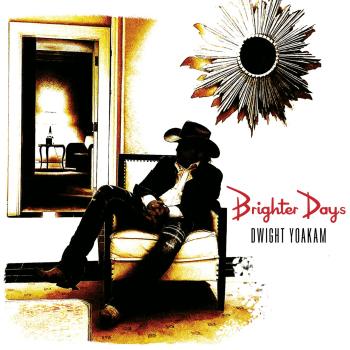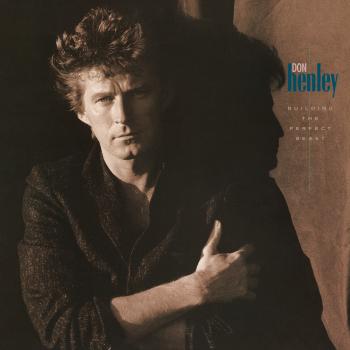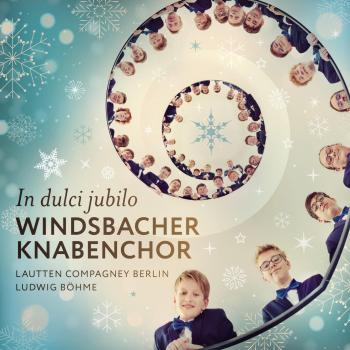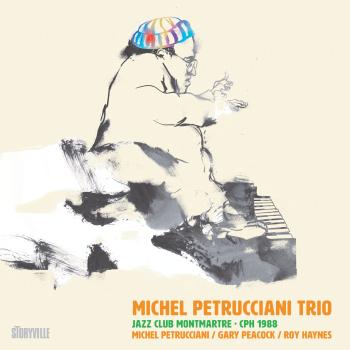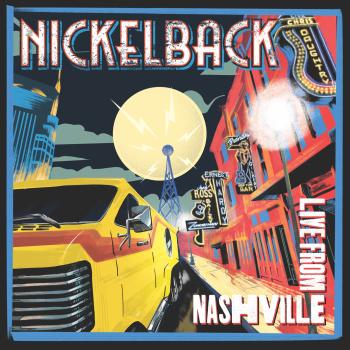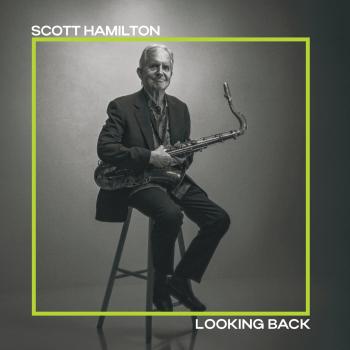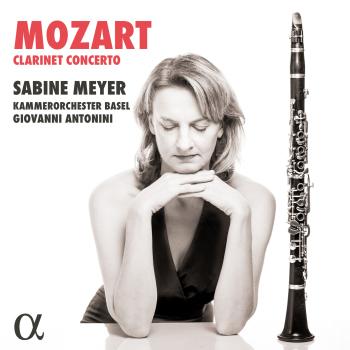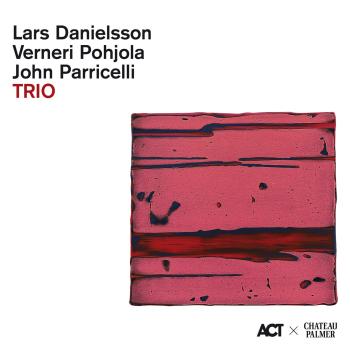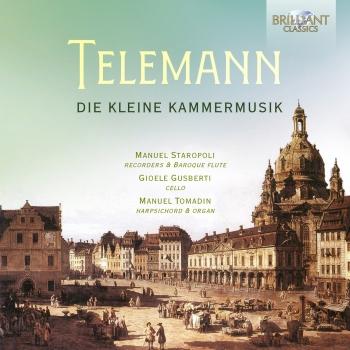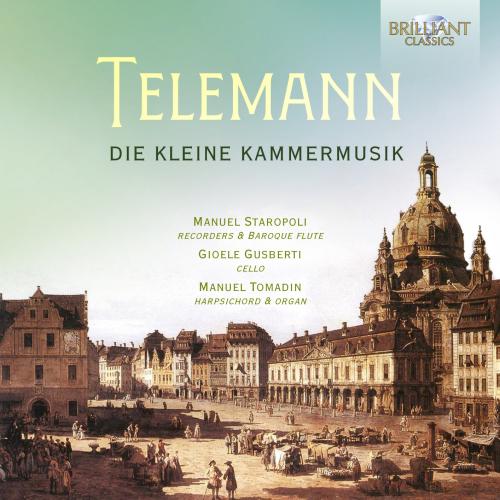
Telemann: Die Kleine Kammermusik Manuel Tomadin & Manuel Staropoli
Album Info
Album Veröffentlichung:
2020
HRA-Veröffentlichung:
28.08.2020
Label: Brilliant Classics
Genre: Classical
Subgenre: Chamber Music
Interpret: Manuel Tomadin & Manuel Staropoli
Komponist: Georg Philipp Telemann (1681–1767)
Das Album enthält Albumcover Booklet (PDF)
- Georg Philipp Telemann (1681 - 1767): Partita No. 1 in B-Flat Major, TWV 41:B1:
- 1 Partita No. 1 in B-Flat Major, TWV 41:B1: I. Con affetto 01:57
- 2 Partita No. 1 in B-Flat Major, TWV 41:B1: II. Presto 01:23
- 3 Partita No. 1 in B-Flat Major, TWV 41:B1: III. Dolce 01:42
- 4 Partita No. 1 in B-Flat Major, TWV 41:B1: IV. Vivace 01:05
- 5 Partita No. 1 in B-Flat Major, TWV 41:B1: V. Largo 02:04
- 6 Partita No. 1 in B-Flat Major, TWV 41:B1: VI. — 00:48
- 7 Partita No. 1 in B-Flat Major, TWV 41:B1: VII. Allegro 01:06
- Partita No. 2 in G Major, TWV 41:G2:
- 8 Partita No. 2 in G Major, TWV 41:G2: I. Siciliano 01:32
- 9 Partita No. 2 in G Major, TWV 41:G2: II. Allegro 01:12
- 10 Partita No. 2 in G Major, TWV 41:G2: III. Allegro 01:40
- 11 Partita No. 2 in G Major, TWV 41:G2: IV. Vivace 01:11
- 12 Partita No. 2 in G Major, TWV 41:G2: V. Affettuoso 02:19
- 13 Partita No. 2 in G Major, TWV 41:G2: VI. Presto 01:17
- 14 Partita No. 2 in G Major, TWV 41:G2: VII. Tempo di minue 02:40
- Partita No. 3 in C Minor, TWV 41:c1:
- 15 Partita No. 3 in C Minor, TWV 41:c1: I. Adagio 01:31
- 16 Partita No. 3 in C Minor, TWV 41:c1: II. Presto 00:42
- 17 Partita No. 3 in C Minor, TWV 41:c1: III. Vivace 01:06
- 18 Partita No. 3 in C Minor, TWV 41:c1: IV. Vivace 01:21
- 19 Partita No. 3 in C Minor, TWV 41:c1: V. Allegro 00:48
- 20 Partita No. 3 in C Minor, TWV 41:c1: VI. Vivace 01:15
- 21 Partita No. 3 in C Minor, TWV 41:c1: VII. Presto 01:17
- Partita No. 4 in G Minor, TWV 41:g2:
- 22 Partita No. 4 in G Minor, TWV 41:g2: I. Grave 02:13
- 23 Partita No. 4 in G Minor, TWV 41:g2: II. Allegro 01:02
- 24 Partita No. 4 in G Minor, TWV 41:g2: III. Allegro 01:57
- 25 Partita No. 4 in G Minor, TWV 41:g2: IV. Tempo di Minue 00:55
- 26 Partita No. 4 in G Minor, TWV 41:g2: V. Allegro 01:51
- 27 Partita No. 4 in G Minor, TWV 41:g2: VI. A Tempo giusto 01:11
- 28 Partita No. 4 in G Minor, TWV 41:g2: II. Allegro assai 01:57
- Partita No. 5 in E Minor, TWV 41:e1:
- 29 Partita No. 5 in E Minor, TWV 41:e1: I. Andante 01:28
- 30 Partita No. 5 in E Minor, TWV 41:e1: II. Vivace 01:42
- 31 Partita No. 5 in E Minor, TWV 41:e1: III. Presto 01:07
- 32 Partita No. 5 in E Minor, TWV 41:e1: IV. Vivace 01:14
- 33 Partita No. 5 in E Minor, TWV 41:e1: V. Siciliana 02:19
- 34 Partita No. 5 in E Minor, TWV 41:e1: VI. Vivace 01:28
- 35 Partita No. 5 in E Minor, TWV 41:e1: VII. Presto 00:58
- Partita No. 6 in E-Flat Major, TWV 41:Es1:
- 36 Partita No. 6 in E-Flat Major, TWV 41:Es1: I. Affettuoso 01:52
- 37 Partita No. 6 in E-Flat Major, TWV 41:Es1: II. Presto 00:52
- 38 Partita No. 6 in E-Flat Major, TWV 41:Es1: III. Vivace 01:22
- 39 Partita No. 6 in E-Flat Major, TWV 41:Es1: IV. Tempo di ciaccona 01:11
- 40 Partita No. 6 in E-Flat Major, TWV 41:Es1: V. Allegro 00:53
- 41 Partita No. 6 in E-Flat Major, TWV 41:D6: VI. Allegro 02:01
- 42 Partita No. 6 in E-Flat Major, TWV 41:D6: VII. Tempo di Minue 02:26
- Cello Sonata in D Major, TWV 41:D6:
- 43 Cello Sonata in D Major, TWV 41:D6: I. Lento 02:27
- 44 Cello Sonata in D Major, TWV 41:D6: II. Allegro 02:51
- 45 Cello Sonata in D Major, TWV 41:D6: III. Largo 01:42
- 46 Cello Sonata in D Major, TWV 41:D6: IV. Allegro 02:15
Info zu Telemann: Die Kleine Kammermusik
Telemann published the Kleine Kammermusik in 1716 in Frankfurt: his second published collection, intended for performance equally with violin or flute. His preface indicates that these pieces share a light and cantabile style particularly tailored to amateur performers on their respective instruments, with relatively narrow intervals in the solo part. Nonetheless, their unfailingly stylish melodies invite performance by professionals such as this trio of Italian musicians, experienced in period-instrument performance and with a catalogue of distinguished albums on Brilliant Classics to their credit.
The dance movements in each of the six Partitas are quintessential Telemann: brief, unaffected by false intensity even in the three minor-key works, always infused with a lively appreciation of harmony, beautifully proportioned structures and voice-leading that enables each voice of the counterpoint to be heard at any point.
Telemann himself advertised the lack of chromaticism with charming candour: ‘I also cultivated the brevity of the Arias, partly to preserve the energy of the performer and partly to avoid boring the listener's ears due to the length… Finally, I have tried to present something that could meet everyone's taste.’ In this it can be conclusively said that he succeeded.
The most recent collaboration of these fine musicians was a Brilliant Classics album of recorder sonatas by Marcello, Vivaldi and Bellinzani (96052) which attracted critical praise both for the rarity of the repertoire and the idiomatic finesse of the performances.
‘Recorder aficionados will certainly enjoy this disc. Manuel Staropoli and his colleagues deliver fine performances’ (MusicWeb International).
Their recording of Vivaldi’s trio sonatas for Baroque flute (94173) likewise ‘should appeal to both Vivaldi lovers and recorder aficionados alike. The recorder playing is as good as one could wish’ (MusicWeb International).
Telemann’s “Kleine Kammermusik” contains 6 Partitas, written for violin or flute and basso continuo. The choice of solo instrument is therefore open, Telemann (1681-1767) even gives the opportunity to play them on harpsichord alone (BC 95683).
Flutist Manuel Staropoli selected several flutes, ranging from the tenor transverse flute to the soprano recorder. The continuo of harpsichord or organ is enhanced by the rich sonority of a cello.
Although Telemann wrote these Partitas in a light and cantabile style for beginners he leaves plenty of room for the Virtuoso to add ornamentations.
In this performance the musicians offer lively and brilliant playing, their tasteful embellishments letting this charming music shine with delight.
Played on period instruments by flutist Manuel Staropoli, keyboard player Manuel Tomadin and cellist Gioele Gusberti.
Manuel Staropoli, recorders, baroque flute
Gioele Gusberti, cello
Manuel Tomadin, harpsichord, organ
Manuel Staropoli
Gioele Gusberti
From Cremona, studied baroque and classical cello with C. Frigerio after earning his diploma with E. Contini. He then finished his studies with G. Nasillo and later on perfected his cello playing with A. Gervreau, M. Valli, A. Palmeri and with S. Vegetti. He primarily focuses on chamber music collaborating with various Ensembles, such as Accademia Montis Regalis, Milano Classica, Stagione Armonica, Concert de’ Cavalieri, Cenacolo Musicale, Ensemble Il Continuo.
He collaborated as first chair on cello with various directors, such as T. Koopman, D. Gutknecht, A. De Marchi, E. Höbarth, L. Ghielmi, S. Balestracci, G. Capuano. He performed in multiple concerts, many of which as a soloist in prestigious venues and Festivals, as well as tours around Europe and Japan. He also was part of award winning recordings of chamber music published for Discantica, Bongiovanni, Tactus, Velut Luna, L.C. Centaurus, Hyperion, Amadeus, Brilliant, Sony, UraniaRecords.
Among the soloist albums he recorded as first performance the 12 sonatas of the “Trattenimento Musicale” by D. Galli, “Eight Duets for Two Violoncellos” by Giovanni Battista Cirri and the XII Sonatas for Cello and Basso Continuo by Giovanni Battista Somis.
The interest for recovering of the performance practice inspired him to publish essays for recordings and to coordinate musicological publications and transcriptions of unpublished music for Musedita, Diastema (which in September 2014 included him in its scientific committee) and for Armelin-Padova he edited a volume titled “11 transcriptions for Ensembles of Cellos of 3 & 4 parts” with a presentation by Giovanni Gnocchi.
He held several seminars as lecturer and since 2008 he curates essays, articles, interviews and reviews for Archi Magazine based in Rome. He plays on a cello of Christian Guidetti – Locarno, kindly granted to him by the author and on a cello from the private collection M. Maggi of Cremona.
Manuel Tomadin
He spends constantly his musical attitude to Renaissance and Baroque music through the study of ancient essays and historical instruments. He studied with Claudio Astronio, Andrea Marcon, Michael Radulescu, Luca Scandali, Ferruccio Bartoletti,Peter Planyavsky, Olivier Latry, Paolo Crivellaro, Jon Laukvik, Ludger Lohmann, Gustav Auzinger, Hans Fagius, Peter Van Dijk, Francesco di Lernia, Eric Lebrun, Teo Theoliema. From 2001 to 2003 he studied at Schola Cantorum Basiliensis (Switzerland) with Jean Claude Zehnder and Andrea Marcon.
He has an intense concert activity, in Italy and in Europe. He recorded for the editorial series “Gli Organi Storici del Friuli Venezia Giulia” and for Toondrama record label. He collaborates with the recorder player Manuel Staropoli and with the ancient music ensemble “Terg Antiqua”; he teaches in italian academies, in Mannheim, Lubijana and Belgrade.
He won four prizes in national organistic contests and four international awards (First prize in Fussen – Breitenwang – Mittenwald and Second prize in Innsbruck for two times). He is also winner of the Grand Prix d’ECHO in the Alkmaar Schnitger Competition.
He is artistic director of the Organ International Festival in Udine and of the Antonio Vivaldi Festival of Trieste.
Booklet für Telemann: Die Kleine Kammermusik

